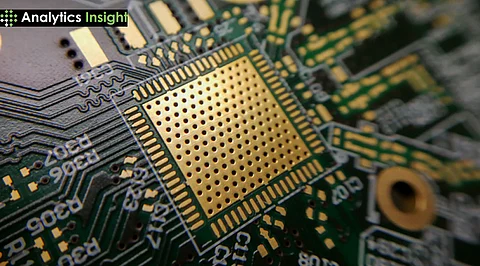

Embedded Systems are specialized computing systems designed to perform specific tasks within a larger mechanical or electronic system. They are typically based on microprocessors or microcontrollers and include software that is embedded in the system to control its operations. Embedded systems are widely used in various devices and technologies, such as home appliances, automotive systems, medical devices, and industrial control systems.
Description: These systems operate independently without relying on a host system. They can process inputs and generate outputs autonomously.
Examples: Microwave ovens, calculators, and MP3 players.
Description: These systems are designed to respond to inputs within a specific time frame. They are crucial in applications where timely responses are critical.
Soft Real-Time Systems: Can tolerate some delay in response times without significant consequences.
Hard Real-Time Systems: Must respond within strict time constraints to avoid system failure.
Examples: Automotive airbag control systems, traffic control systems.
Description: These systems rely on network connectivity to function. They communicate with other devices over wired or wireless networks.
Examples: Home security systems, point-of-sale systems, and ATMs.
Description: These are portable systems designed for mobility and efficiency. They are often used in consumer electronics.
Examples: Smartphones, digital cameras, and laptops.
Description: Typically use 8-bit or 16-bit microcontrollers with limited memory and processing power. Often battery-powered.
Examples: Simple toys, remote controls.
Description: Use 16-bit or 32-bit microcontrollers with more memory and processing power than small-scale systems. Often used in home appliances and medical devices.
Examples: Home appliances, medical devices.
Description: Employ 32-bit or 64-bit microcontrollers for complex tasks. These systems have significant software and hardware complexities.
Examples: Industrial control systems, high-end medical equipment.
Description: Systems where the response time is not predictable and may vary based on external factors.
Examples: Some IoT devices that do not require real-time responses.
Task-Specific Design: Embedded systems are optimized to perform specific tasks efficiently, using minimal resources and energy. This makes them ideal for devices that require fast and reliable operation, such as industrial machinery and consumer electronics.
Real-Time Operation: Many embedded systems operate in real-time, ensuring timely responses to inputs, which is critical in applications like automotive safety systems and medical devices.
Safety Features: Embedded systems enhance safety by controlling critical functions in vehicles (e.g., airbags, ABS) and medical devices (e.g., pacemakers, insulin pumps).
Reliability: They are designed to be highly reliable, reducing the likelihood of system failures, which is essential in safety-critical applications.
Reduced Costs: Embedded systems are cost-effective because they use specialized hardware and software, reducing the overall cost of production compared to general-purpose computers.
Long-Term Savings: They help reduce maintenance and operational costs by optimizing energy consumption and improving device lifespan.
Smart Technologies: Embedded systems enable smart technologies, such as smart home devices, IoT gadgets, and wearable devices, enhancing connectivity and user experience.
Innovation: They facilitate the development of new products and technologies, such as autonomous vehicles and advanced medical equipment, by integrating complex functionalities into compact devices.
Industrial Automation: Embedded systems are crucial in manufacturing for controlling machinery, optimizing production processes, and ensuring efficient resource utilization.
Consumer Electronics: They are integral to consumer electronics like smartphones, TVs, and gaming consoles, enhancing performance and user experience.
Smartphones and Mobile Devices: Embedded systems manage phone operations, including processing calls, texts, and apps.
Digital Cameras: Process image data, control camera settings, and enable features like autofocus and image stabilization.
Video Game Consoles: Handle graphics rendering, user input, and game logic for an immersive gaming experience.
Microwave Ovens: Control power levels, cooking time, and sensor-based features to heat food efficiently.
Washing Machines: Manage wash cycles, temperature, and water usage3.
Smart Refrigerators: Monitor food inventory, manage temperature settings, and provide smart features like recipe suggestions.
Anti-lock Braking Systems (ABS): Enhance vehicle safety by preventing wheel lockup during hard braking.
Airbag Deployment Systems: Ensure timely deployment of airbags in the event of a crash.
GPS Navigation Devices: Receive satellite signals, calculate routes, and provide turn-by-turn navigation instructions.
Pacemakers: Monitor heart activity and deliver electrical pulses to regulate heart rhythm.
ECG Meters: Measure heart activity and provide real-time readings.
Bioprinters: Use embedded systems to print biomaterials for medical research and organ transplantation.
Industrial Control Systems: Manage manufacturing processes, monitor machinery, and optimize production.
Point-of-Sale (POS) Systems: Handle transactions, manage inventory, and integrate with payment systems.
ATM Machines: Manage transaction processing, user authentication, and cash dispensing.
Smart Surveillance Cameras: Send real-time recordings to monitoring stations and use AI for object detection.
Access Control Systems: Use authentication methods like keycards or biometrics to control access.
Flight Control Systems: Manage various flight parameters, including navigation and autopilot functions.
Spacecraft Systems: Control navigation, communication, power management, and data collection.
The key components include a microcontroller/microprocessor, memory (ROM and RAM), peripherals (e.g., GPIO, UART), and often a real-time operating system (RTOS).
A microprocessor is the central processing unit (CPU) of a computer system, while a microcontroller integrates the CPU with memory and input/output peripherals on a single chip.
Firmware is software embedded into hardware devices (like microcontrollers) to control their operation. It is typically stored in ROM and is essential for the device's functionality.
An RTOS is designed to manage tasks with precise timing requirements, ensuring that critical tasks are executed within strict deadlines. Examples include FreeRTOS and VxWorks.
Watchdog timers are hardware counters that reset the system if a software or hardware fault occurs and the system fails to respond within a specified time, enhancing system reliability.
Debugging involves using tools like JTAG/SWD debuggers, logic analyzers, or oscilloscopes, as well as instrumenting code with print statements or debug messages.
Embedded C is a subset of the C programming language tailored for embedded systems development. It includes features like direct register access and bit manipulation.
Embedded systems are used in consumer electronics, automotive systems (e.g., ABS, ECUs), medical devices, and industrial automation.
Embedded systems enhance efficiency, safety, and innovation across various sectors by providing real-time operation, reliability, and cost-effectiveness
